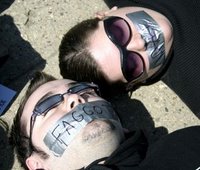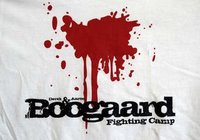 just before midnight, esperanza said g’night and handed me a slip of paper. it indicated that for the next 24 hours, she’s participating in the day of silence. from the website:
just before midnight, esperanza said g’night and handed me a slip of paper. it indicated that for the next 24 hours, she’s participating in the day of silence. from the website:
The National Day of Silence brings attention to anti-LGBT name-calling, bullying and harassment in schools. This year’s event will be held in memory of Lawrence King, a California 8th-grader who was shot and killed Feb. 12 by a classmate because of his sexual orientation and gender expression. Hundreds of thousands of students will come together on April 25 to encourage schools and classmates to address the problem of anti-LGBT behavior.
the other larry king offers a psa and helpful introduction. though she will not speak all day, esperanza won’t be completely silent. she’s negotiated a singing-only class with her music teacher.

